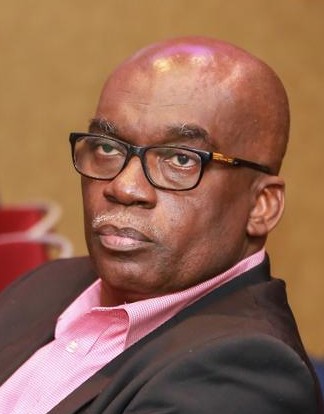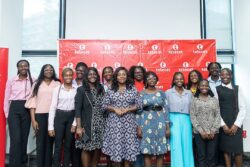Illegal gold mining, locally known as galamsey—short for “gather them and sell”—has grown from an artisanal activity into a national menace in Ghana. While contributing over a third of Ghana’s annual gold production, galamsey has inflicted staggering environmental, health, economic, and social costs.
As Africa’s largest gold producer, Ghana faces the pressing challenge of balancing the allure of gold revenues against the long-term sustainability of its environment, communities, and the health of its people.
Environmental devastation and health risks
The environmental toll of galamsey is immense. Ghana’s landscapes, once lush and fertile, have been scarred by deforestation and land degradation. Rivers, crucial for both domestic and agricultural use, have turned into lifeless, murky streams.
One example is the Offin River, a vital water source, which now resembles chocolate milk, earning the nickname “Milo” due to the high levels of mercury and sediment it carries.
A staggering 75 percent of Ghana’s rivers are polluted, primarily due to mercury and cyanide used in gold extraction. This contamination not only affects aquatic ecosystems but also the people relying on these waters for drinking and farming.
The Ghana Water Company warns that the nation’s supply of clean water has declined by 75 percent due to galamsey-related pollution, raising the grim possibility that Ghana could be forced to import water by 2030.
The health implications are equally dire. Mercury exposure from illegal mining is linked to severe neurological damage, kidney disease, and other chronic illnesses. Communities near mining sites bear the brunt of these health hazards, turning galamsey from an environmental issue into a public health crisis.
Economic gains at the cost of sustainability
Galamsey’s contribution to Ghana’s gold production is significant, but its economic benefits are unevenly distributed. The informal and often illicit nature of these operations deprives the state of nearly $2 billion in annual tax revenue—funds that could bolster healthcare, education, and infrastructure.
One sector bearing the brunt of galamsey’s advance is agriculture. Ghana’s cocoa industry, the world’s second-largest, has been particularly hard-hit, as fertile farmlands are sacrificed to mining activities. Cocoa farms, once the backbone of rural economies, are uprooted to make way for gold extraction. This shift prioritises short-term gains over the long-term sustainability of agriculture, threatening a key pillar of Ghana’s economy and food security.
“Illegal mining has disrupted the agricultural landscape, leaving farmers without livelihoods,” notes the Ghana Cocoa Board. The encroachment of galamsey operations has led to a decline in cocoa production, with ripple effects on Ghana’s export revenues and international reputation as a cocoa powerhouse.
Communities caught in the crossfire
The social impact of galamsey is as profound as its environmental and economic consequences. Entire communities are being reshaped by the industry, often for the worse. Children in mining regions frequently abandon school to work in the mines, perpetuating cycles of poverty.
Foreign actors, particularly Chinese nationals, have intensified the problem. Armed with advanced machinery like the Changfan dredger, these miners excavate riverbeds, causing extensive environmental damage. In towns near galamsey sites, the influx of foreign miners has fostered resentment, as locals see their lands and resources exploited.
These towns have been transformed into hubs of illegal activity. Casinos, machinery stores, and clinics catering to miners have sprung up, creating a parallel economy that thrives on illegality. For many residents, the social fabric of their communities is unravelling.
Political complicity and corruption
Efforts to curb galamsey are often undermined by corruption and political inaction. Traditional chiefs, entrusted with overseeing communal lands, are frequently accused of leasing land to miners for bribes. Politicians, too, have been implicated, with allegations of issuing mining licences to party loyalists or turning a blind eye to illegal operations to secure votes in mining-heavy districts.
The then President Nana Akufo-Addo’s 2017 declaration to “put my presidency on the line” to end galamsey raised hopes but delivered limited results. Critics argue that political will is often sacrificed for electoral gain, leaving communities to suffer the consequences.
President John Mahama has pledged to address the issue during this second term. His first term tenure limited progress in tackling galamsey. “We need a clear roadmap that combines enforcement with community engagement,” says environmental activist Felicity Nelson.
Activists on the frontlines
The fight against galamsey has seen the rise of brave activists who risk their lives to protect Ghana’s environment. Campaigners like Felicity Nelson have faced harassment, detention, and threats for speaking out against illegal mining. “Ghana is worth that sacrifice,” says Nelson, whose resolve exemplifies the courage needed to combat the crisis.
Civil society groups have also exposed bribery attempts by foreign miners and intermediaries. Their vigilance highlights the critical role of grassroots efforts in holding powerful actors accountable. However, activists often operate under constant threat, underscoring the need for greater protections for those challenging the status quo.
Charting a path forward
Galamsey is not an insurmountable problem, but addressing it requires bold, multi-faceted solutions. Here are five key strategies to curb illegal mining and its impacts:
- Strengthening enforcement and penalties
Ghana’s laws imposing 25-year maximum sentences for illegal mining are promising but need consistent enforcement. Transparent judicial processes and severe penalties for both miners and complicit officials are essential. - Improving licensing transparency
The process for issuing mining licences must be reformed to eliminate corruption. Traditional leaders should face accountability for land allocations, and all transactions should be subjected to public scrutiny. - Rehabilitating degraded lands
Restoring lands ravaged by galamsey is critical. Reforestation and soil rehabilitation initiatives can help revitalise ecosystems and create opportunities in eco-tourism and sustainable agriculture. - Promoting alternative livelihoods
Diversifying local economies is key to reducing dependency on illegal mining. Programmes focused on vocational training, agriculture, and eco-tourism can offer viable alternatives to mining. - Safeguarding activists
Activists are indispensable in the fight against galamsey. Ensuring their safety and freedom to operate without intimidation is crucial to sustaining grassroots efforts.
A crossroads for Ghana
The galamsey crisis epitomises Ghana’s broader struggle to balance economic growth with environmental sustainability and social equity. With each election, political leaders are put under pressure to present credible solutions. Yet, true change will require more than promises, it demands action, accountability, and collaboration across all levels of society.
Despite the daunting challenges, there is room for optimism. Growing public awareness of galamsey’s devastating impacts, coupled with the resilience of civil society, signals a turning point. If Ghana can galvanise its political, social, and economic resources, it can reclaim its environment, strengthen its economy, protect the health and wellbeing of its people, and secure a sustainable future.
The question remains: will Ghana seize this moment to turn the tide, or will the golden lure of galamsey continue to overshadow its long-term interests? The answer will shape the nation’s destiny for generations to come.
BYLINE
Jon Offei-Ansah is the Publisher of the London-based pan-African newsmagazine, Africa Briefing (www.africabriefing.com).










